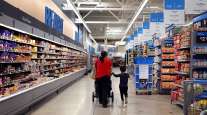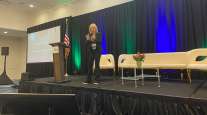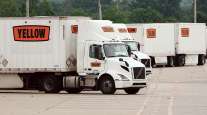Bloomberg News
Unemployment Rate Drops by More Than Expected to 8.4%
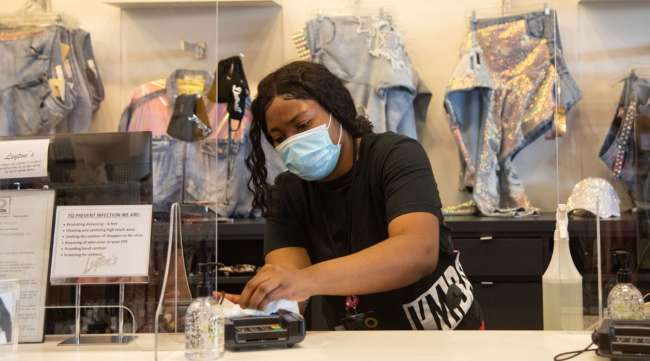
[Ensure you have all the info you need in these unprecedented times. Subscribe now.]
The U.S. labor-market rebound extended for a fourth month in August, offering hope that the economy can continue to recover despite a persistent pandemic and Washington’s standoff over further government aid to jobless Americans and small businesses.
Nonfarm payrolls increased by 1.37 million, including the hiring of 238,000 temporary Census workers, according to a Labor Department report Sept. 4. The unemployment rate fell by more than expected, by almost 2 percentage points, to 8.4%.
The dollar and yields on 10-year Treasuries climbed after the report, while the S&P 500 rose at the open. The median estimates in a Bloomberg survey of economists called for a 1.35 million gain in nonfarm payrolls and an unemployment rate of 9.8%. It was 3.5% in February, matching a half-century low.
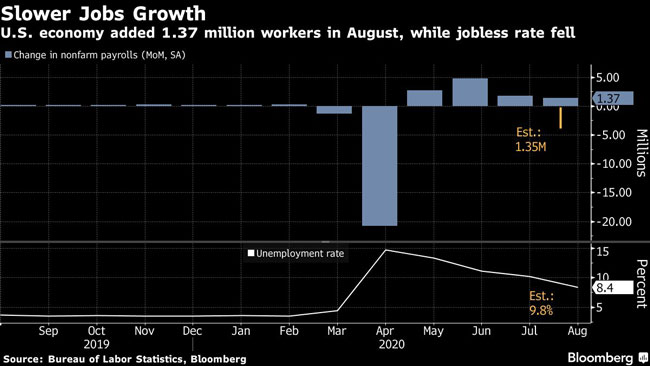
The data signal progress in the labor market is continuing though at a more moderate pace since the initial bounce back in hiring, with payrolls remaining about 11.5 million below the pre-pandemic level. The pace of further gains likely hinges on whether America improves control of coronavirus infections, as well as an end to the stalemate in Congress over another stimulus package — something that could lose urgency after Sept. 4’s numbers.
The drop in the unemployment rate to single digits, with two months before the November election, could give a boost to President Donald Trump, who has often polled better than Democratic opponent Joe Biden on economic issues and is counting on such sentiment to help him win a second term. Trump tweeted after the report that the jobless rate went below 10% “faster and deeper than thought possible.”
“It’s a solid report. Job growth has moderated for the last few months, but it seems like the rehiring of workers is still under way,” said Ryan Sweet, head of monetary policy research at Moody’s Analytics Inc. “This was a big step in the right direction. We need to maintain this, but without fiscal stimulus that will be hard to do.”
One troubling figure from the report: The number of permanent job losers rose by more than half a million, to 3.41 million, after being little changed in July. The majority of the 10.3 million unemployed — about 6.16 million — continue to be on temporary layoff.
Also, news of job losses keeps coming: In recent weeks, a host of companies from American Airlines Group Inc. and United Airlines Holdings Inc. to Ford Motor Co. and Bed Bath & Beyond, have announced plans to cut workers. Lawmakers remain at odds over another comprehensive stimulus bill after the supplemental $600 in weekly unemployment benefits and small-business aid expired.
The payroll figures showed broad-based gains across industries. Retail added about 249,000 jobs, more than in the prior month, while professional business services increased by 197,000 and transportation and warehousing was up about 78,000.
Leisure Cools
But the gains in leisure and hospitality businesses, such as restaurants, that had driven prior months cooled significantly in August with a rise of 174,000, compared with 621,000 in July. Also, the 29,000 rise in manufacturing jobs was less than half the median estimate of economists.
Adjusted for the misclassification of workers who should have been labeled as unemployed — a problem plaguing the data in recent months — the jobless rate would have been 0.7 percentage point higher in August, the Labor Department said.
RELATED: Jobless Claims Give Mixed Picture With Shift in Adjustments
The report also showed a strong gain in one key figure, the employment-population ratio, which jumped 1.4 percentage points to 56.5%, though that’s still well below February’s level of 61.1%.
“Obviously, it’s not encouraging to have people shift from temporary to what’s considered permanent job loss,” said Michelle Meyer, head of U.S. economics at Bank of America Corp. “But if you take a step back and look at the 8.4% unemployment rate, it’s well better than what we could’ve imagined.”
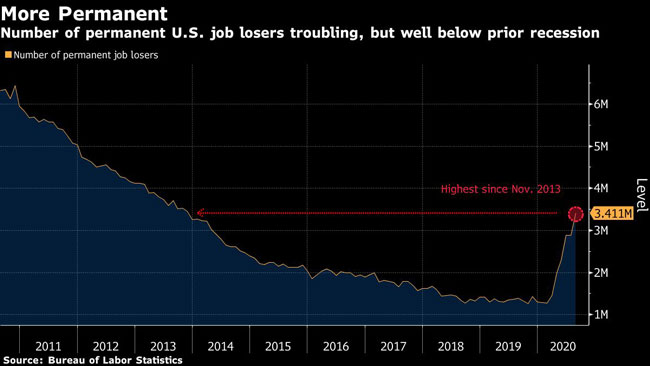
Participation Rises
The participation rate, which is the share of the population that is either working or actively looking for work, rose to 61.7% after declining the prior month, potentially reflecting more Americans looking for work once more as the supplemental $600 in weekly jobless benefits expired. The so-called prime-age participation rate, or the participation rate among those ages 25-54, rose to 81.4%, though it’s below June’s level of 81.5%.
The much better-than-expected improvement in the jobless rate spanned demographic groups, though White and Hispanic Americans saw larger declines in the rate compared with Asian and Black Americans. The difference between the White and Black unemployment rates widened to 5.7 percentage points from 5.4 points in July.
The gender gap narrowed, though. Among adult women, the unemployment rate fell 2.1 percentage points to 8.4%, compared with a 1.4-point drop among men, to 8%.
RELATED: Trucking Surges as Capacity Tightens Amid Continued Pandemic
The U-6 rate, also known as the underemployment rate, declined to 14.2% from 16.5%. Unlike the headline unemployment rate, also known as the U-3 rate, it accounts for those who quit looking for a job because they were discouraged about their prospects and those working part time but desiring a full workweek.
The report also showed average hourly earnings rose 0.4% from the prior month and were up 4.7% from a year ago, though the figure has been volatile throughout the pandemic given the scale and distribution of payroll losses and gains. The average workweek edged up to 34.6 hours.
Want more news? Listen to today's daily briefing:
Subscribe: Apple Podcasts | Spotify | Amazon Alexa | Google Assistant | More


